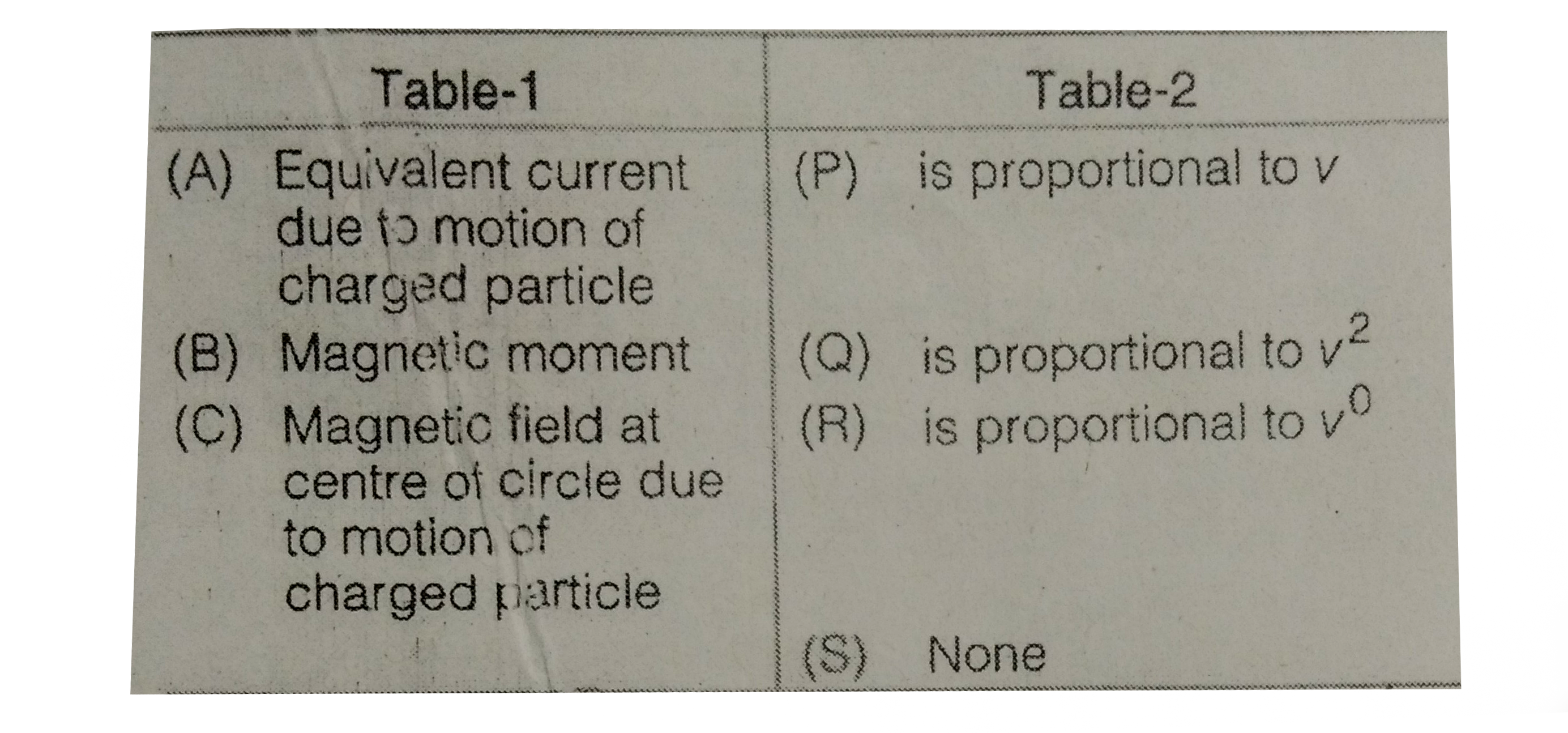Assertion: A proton an an alpha particle having the same kinetic energy are moving in circular paths in a unifrom magnetic field. The radii of their circular paths wll be equal.
Reason: Any two charged particles having equal kinetic energies and entering a region of unifrom magnetic feild →B in a direction perpendicular to →B, will describe circular trajectoreis of equal radii.
If both the assertion and reason are true and reason is a true explantion of the assertion.
If both the assertion and reason are true but the reason is not the correct explantion of the assertion.
If the assertion is true but reason false
If both the assertion and reason are false.
The correct Answer is:A
The ratio of the circular path is given by
r=mvqB=√2mKqB , where K=12mv2
Since K and B are the same for the two particles, r∝√mq, Now, the charge of an alpha particle is twice that of a proton and its mass is four times the mass of a proton, √m/q will be the same for body particles. Hence, r will be the same for both particles.
Topper's Solved these Questions
- BOOK - A2ZCHAPTER - SOURCE AND EFFECT OF MAGNETIC FIELDEXERCISE - Section D - Chapter End Test30videos
SOURCE AND EFFECT OF MAGNETIC FIELD
- BOOK - A2ZCHAPTER - SOURCE AND EFFECT OF MAGNETIC FIELDEXERCISE - AIIMS Questions33videos
SOURCE AND EFFECT OF MAGNETIC FIELD
- BOOK - A2ZCHAPTER - SEMICONDUCTOR ELECTRONICSEXERCISE - EXERCISE29videos
SEMICONDUCTOR ELECTRONICS
- BOOK - A2ZCHAPTER - WAVE OPTICSEXERCISE - Section D - Chapter End Test29videos
WAVE OPTICS
Similar Questions
Knowledge Check
- Question 1 - Select One
An electron, a proton and an alpha particle having the same kinetic energy are moving in circular orbits of radii re,rp,rα respectively in a uniform magnetic field B. The relation between re,rp,rα is:
Are>rp=rαBre<rp=rαCre<rp<rαDre<rα<rp - Question 2 - Select One
A proton, a deuteron and an α- particle having the same kinetic energy are moving in circular trajectors in a constant magnetic field. If rp,rd and rα denote respectively the radii of the trajectories of these particles then
Arα=rp<rdBrα>rd>rpCrα=rd>rpDrp=rd=rα - Question 3 - Select One
A proton, a deuteron and an α-particle having the same kinetic energy are moving in circular trajectories in a constant magnetic field. If rp,rd and rα denote respectively the radii of the trajectories of these particles then :-
Arα=rd>rpBrα=rd=rpCrα<rd<rpDrα=rp<rd
A photon and an alpha particle having same kinetic energies are entering in a uniform magnetic field normal to as shown in figure. The ratio of time to return on the same side is
_PHY_E06_050_Q01.png) View Solution
View SolutionA proton and an α- particle is projected with equal kinetic energy in transverse uniform magnetic field B. The ratio of radii of proton to that of alpha particle is
View SolutionA proton, a deuteron and an α-particle with the same KE enter a region of uniform magnetic field, moving at right angles to B. What is the ratio of the radii of their circular paths ?
View SolutionA proton, a deuteron and an q-particle having the same kinetic energy are moving in circular trajectories in a constant magnetic field. If rp,rdandrα ro denote respectively the radii of the trajectories of these particles then
View SolutionA proton , a deutron and α)- particle having the same kinetic energy are moving in circular trajectories in a constant magnetic field . If rp,rd,andrα denote respectively the radii of the trajectories of these particles , then
View Solution


